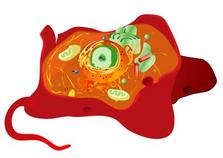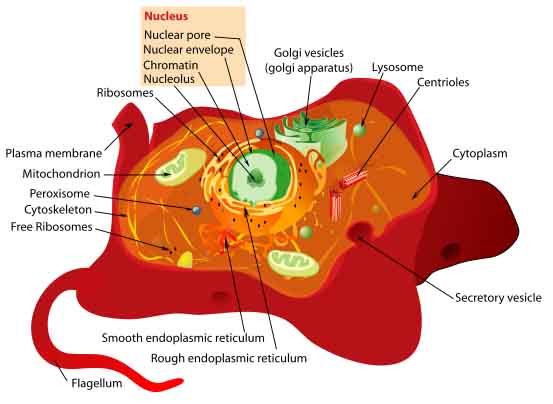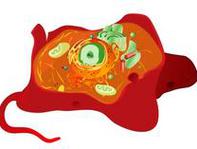 | ||||
Animal Cell Parts, Functions
& Diagrams
All living things are made of cells, the smallest units of life, and there are only two main types of cells:
- prokaryotes, which are the primitive, simple cells of bacteria and their bacteria-like cousins archaea
Article Summary: Animal cells are a type of eukaryotic cell with a nucleus, membrane-bound organelles and no cell wall. Here is a summary of their structure and function.
Animal Cell Structures, Functions & Diagrams
Prokaryotic cells (above) are much simpler in structure than eukaryotic cells (below).
SPO VIRTUAL CLASSROOMS
 | ||||||
- eukaryotes, which include the more advanced cells of animals, plants, fungi, protozoans, algae, and slime & water molds
Eukaryotic cells share many similar characteristics, including some of the following structures, which can be found in the cells of animals:
Cell Envelope & External Structures of Animal Cells
- Glycocalyx: Some animal and protozoan cells have this sticky outer layer anchored to the plasma membrane. Gycocalyces help animal cells stick to each other and protect cells from dehydration. This layer is not present in eukaryotic cells that have a cell wall, such as plants, algae and fungi.
- Cilia and flagella: Constructed of microtubules covered with plasma membrane (analogous to an arm or leg bone covered in skin), these external appendages, present in some animal cells, aid in cell movement and in moving materials around the outside surface of the cell.
- Plasma membrane: All cells have plasma membranes. In eukaryotic cells, this barrier between the inside and the outside of the cell is made mainly of phospholipids, proteins and sterols.
Click here for a practice assignment on identifying the parts of an animal cell.
The Virtual Cell Biology Classroom provides a wide range of free educational resources including Power Point Lectures, Study Guides, Review Questions and Practice Test Questions.
Page last updated: 1/2016





